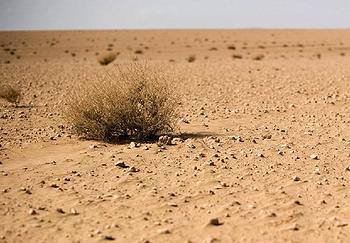Maribo has set sail for new waters! The new site will continue to talk about climate change and other issues at the science-policy interface. We'll also experiment with dispatches from the field, interviews with experts about new research, and contributions from students. Please update your urls!
----------------------------------------------------------------------------
In 2006, a naïve young climate scientist realized he had become a climatic Kevin Bacon to friends and family. None of them studied or worked in the areas of
physical science, environmental science or environmental issues. Yet
they were all interested in news about climate change simply because there
was one person in their community who studied climate change for a
living. Maribo was his attempt to further engage and expand that
community.
I remember the uncertainty. I deliberated about starting the blog for months. Was it worth the effort? Would it engage new people, or appeal only to those already thinking about climate and global change issues?
Would comments or jokes about policy compromise my scientific career?
The final decision to launch Maribo was made less by an answer to those questions, than by an incident at U.S. Customs in the Toronto Airport. I had a story I wanted to share. Here's an excerpt:
[agent] “What do you study?”
Be calm, remember one wrong word, a
customs agent may decide I look a bit Sephardic have me deported to
Syria because my ancestors lived there 2000 years ago.
[me] “I’m a climate scientist but I work at the public policy department”
Did I just say that? Way too confusing. What happened to keep it simple, stupid?
[me] “Climate research is important for policy these days.”
Great, now I look too political.
The agent scanned my passport. He looked me in the eye.
Oy. Here we go.
He launched into a tirade about the Bush Administration’s repression of science and failure to address climate change.
With that, Maribo was launched.
This blog is one case where I do not regret the hand-wringing over a decision. In fact, I wish I had done more. If asked to give one, and only one, piece of advice to young scientists interested in public engagement, it would be this: Be extremely harsh with yourself about why you are getting engaged beyond the scientific world.
From a post on the subject:
What values are motivating your engagement, and how are those values affecting the public statements you plan to make? It is perfectly acceptable to advocate. We are citizens, we have every right to express our views. However, if we are not clear with people about when you are making a scientific or "objective" judgement (i.e. our analysis shows climate change will lead to an increase in coral bleaching) versus a value judgement or a "should" statement (i.e. we "should" reduce greenhouse gas emissions), then we are only doing harm to the overall scientific enterprise...
... think very carefully about who you are representing when you deal with the public or policymakers, be it in a public seminar, a policy hearing or a blog post. Are you speaking on behalf of your specific new research? Your greater body of work? Your field? Or "science"? Always keep in mind that while you may think you are speaking on behalf of your own research, the audience may think you are speaking on behalf of "science". Sometimes highlighting an anomalous result, like a resilient coral reef that is an exception to the global rule, can end up misleading the public.
I've made plenty of mistakes with Maribo over the years. Ill-considered posts or positions, neglected links, bad analogies, typos, you name it. In fact, you have named them.
That statement encapsulates the good - and the bad - of blogging. Writing a post is easy and fast. The immediacy of the internet means mistakes large and small are instantly broadcast to the world. The good is that mistakes large and small are noted by readers and can be corrected; the system of wiki-checks and balances leads to real conversation, and really is the highlight of blogging. The bad is that people often remember that quick-and-easy original story, not the correction, retraction or discussion that follows.
Quite often the "mistake" is the choice of subject, rather than the choice of words. There is only so much time to devote to blogging, so it's important to use the time well. More than anything, the Maribo experience has taught me that it is important not just to get the story right, but also to choose the right story. Too often, myself and other science bloggers get buried in the noise - petty debates and minutiae - at the cost of the signal of global change.
I hope to carry that lesson to a new url. The past holders of the informal Woody Guthrie award, John Neilsen Gammon and Michael Tobis, argued the award should recognize earth science bloggers who:
"think critically and hope for a better world through better education and an honest media" and
"honor the memory of Woody Guthrie by connecting the larger trends in the world with due respect and empathy to the experience of the nonscientists who make up most of the world"
Their words roughly describe the goals of the new iteration of Maribo. We will try to choose stories that bring different, ideally forward-looking views on global challenges like climate change, and to tell those stories in a way that engages a broader audience of non-scientists. We'll also try to provide opportunities for students and young scientists to try their hand at this informal mode of science communication.
It is wonderful to see the scientific world increasingly recognize the value of public engagement. I highly recommend attending some of the many available trainings, workshops and conference sessions on science communication. But that is not enough. I have learned more about "public engagement" on climate change from talking to people from different cultures and backgrounds than from talking to other science communicators. With that in mind, the new Maribo will try to get outside the tribe as much as possible.
























